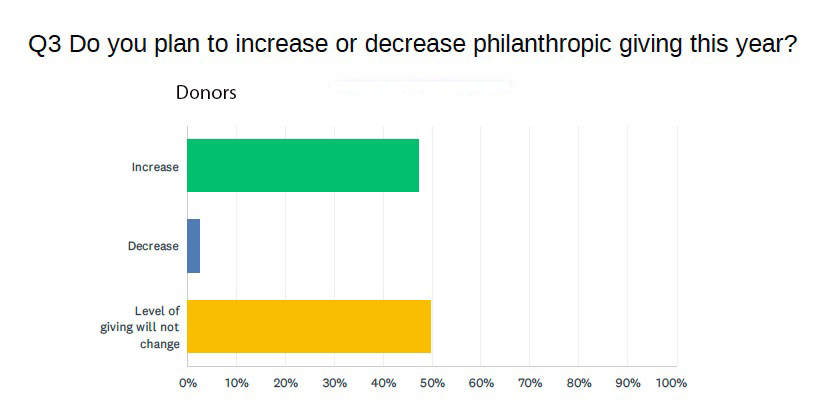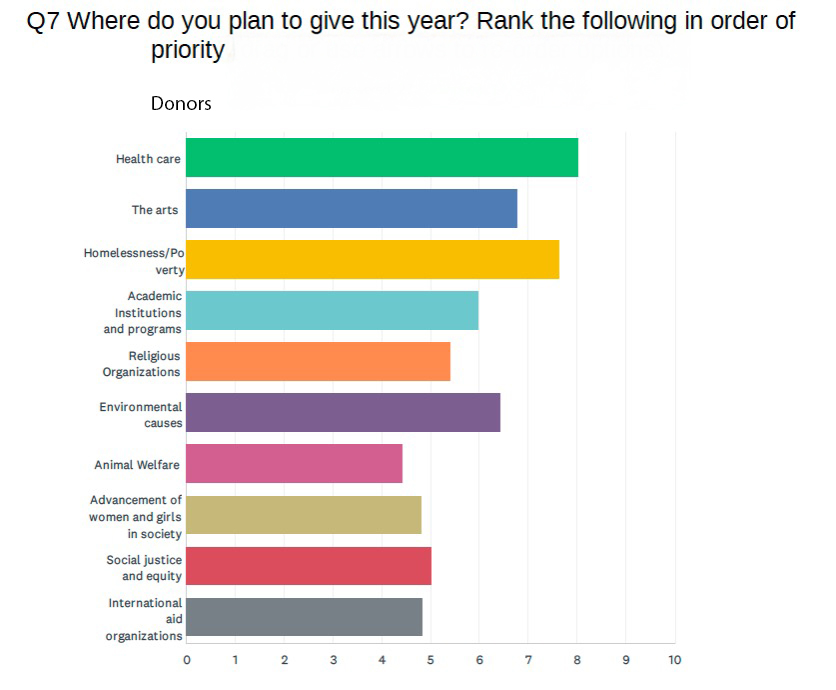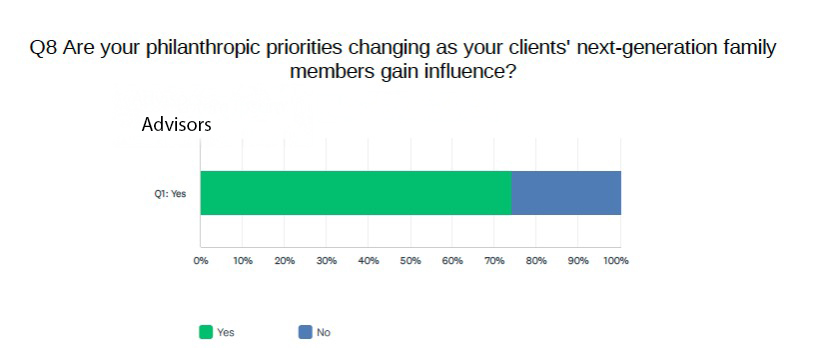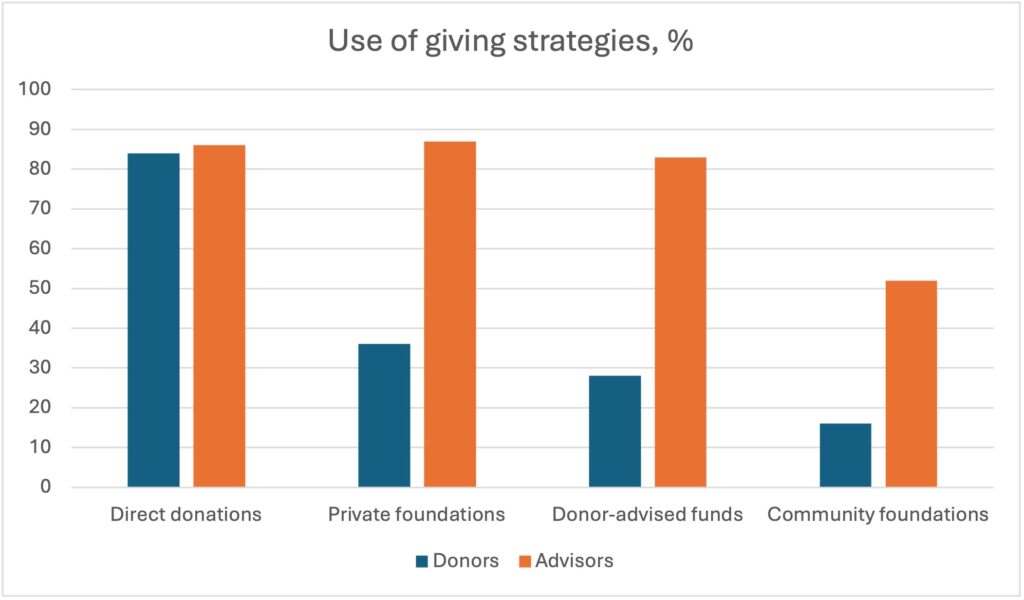As part of our recent special report on “The Changing Face of Philanthropy” in Canada, Canadian Family Offices reached out to our newsletter subscribers to gauge their approaches and attitudes towards charitable giving—where they give, how their level of giving may be changing, and how the landscape may shift as future generations get a seat at the table. In total, 82 respondents completed the February survey, evenly split between family office advisors and donors themselves. Here are the highlights:
A (mostly) unwavering commitment
With economic uncertainty and recent changes to Canadian tax policy, anecdotal evidence has suggested that Canadian philanthropists would pare back their giving in 2025. If that’s the case, it is not evident in our survey. In fact, among donors, nearly all said that their level of giving will increase or stay the same this year.

Similarly, more than 90 per cent of advisors said their clients were planning to either increase their philanthropic giving or make no changes in 2025.
As highlighted in our special report, that continuing generosity is vital to sustaining the important services and supports provided by charitable organizations in Canada. The overall number of Canadians who give to charity has been declining for several years, which has placed the burden of giving increasingly on wealthy—and older—donors.
Notably, among the very few respondents (less than four per cent) who said that they or their clients planned to reduce giving this year, all said that the recent tax changes were somewhat or significantly responsible for the decision.
Where they give
Wealthy philanthropists have long supported important causes in Canadian society, from the arts and education to healthcare and scientific research. We asked donors and advisors where they or their clients direct their giving, in order of preference.
Among both cohorts, the Top 5 reported giving targets were the same: healthcare, homelessness and poverty, the arts, environmental causes and academic institutions/programs.

Changing priorities
As wealthy donors age, a challenge facing the philanthropic sector is whether and how the next generation of Canadian high-net-worth families will approach giving. Will they give as much? Will the charities they choose to support change?
We asked survey respondents whether their or their client families’ philanthropic priorities are changing as next-generation family members gain influence. Among advisors, a strong majority answered in the affirmative—nearly 75 per cent.

Advisors also reported that the next generation is placing different emphases on philanthropic priorities. Among next-gen, support for healthcare, which was the most preferred reported giving area generally, is still strong, but it falls behind two other causes—homelessness/poverty and the environment.
Interestingly, a much lower proportion of donors—about 40 per cent—see philanthropic priorities changing with the next generation, and they said that next-gen’s top giving priority was still healthcare. Given the survey’s limited sample size, it is dangerous to draw broad conclusions, but perhaps the disparity between advisors’ and donors’ perception of the next generation’s philanthropic attitudes suggests something of a communication gap within family generations: Does the older generation know what the younger generation cares about?
Ways to give
Another disparity between donor and advisor responses emerged when we asked how they or their clients give.
Among donors, the most common response was direct donations of shares, cash or other assets (84 per cent), while the reported use of more sophisticated giving platforms was much lower, with 36 per cent using private foundations, 28 per cent using donor-advised funds and 16 per cent donating through community foundations.
Among advisors, however, the survey found a broader application of giving strategies. While they reported a similar level of direct donations of cash or shares, more than 80 per cent said their clients give through private foundations and/or donor-advised funds, and more than half said clients give through community foundations.

This finding may speak to the critical function that knowledgeable advisors can fulfill in helping philanthropists leverage more effective and tax-efficient giving strategies.
Get our new quarterly newsletter about philanthropy: Canadian Family Offices’ new newsletter brings you key insights, trends and expert perspectives on charitable giving, tailored to Canada’s wealth leaders and giving communities. Click here to subscribe now to stay ahead.
Please visit here to see information about our standards of journalistic excellence.

